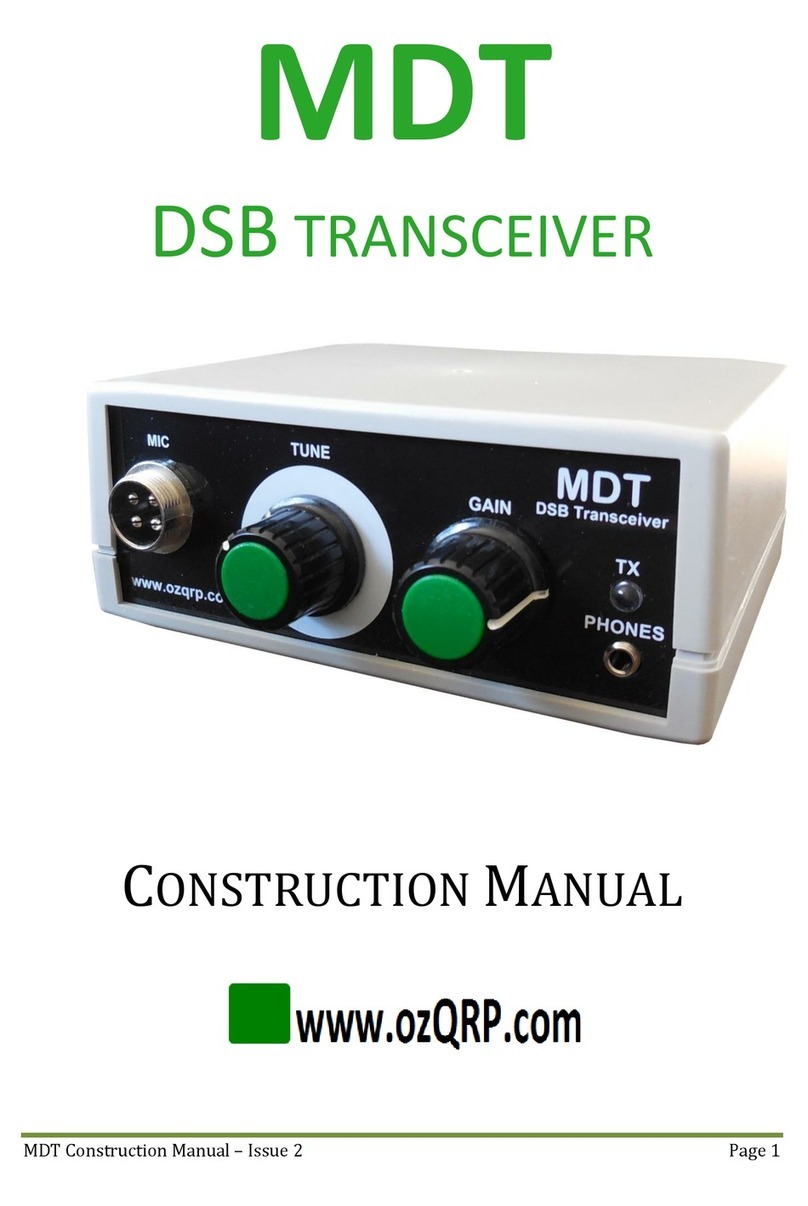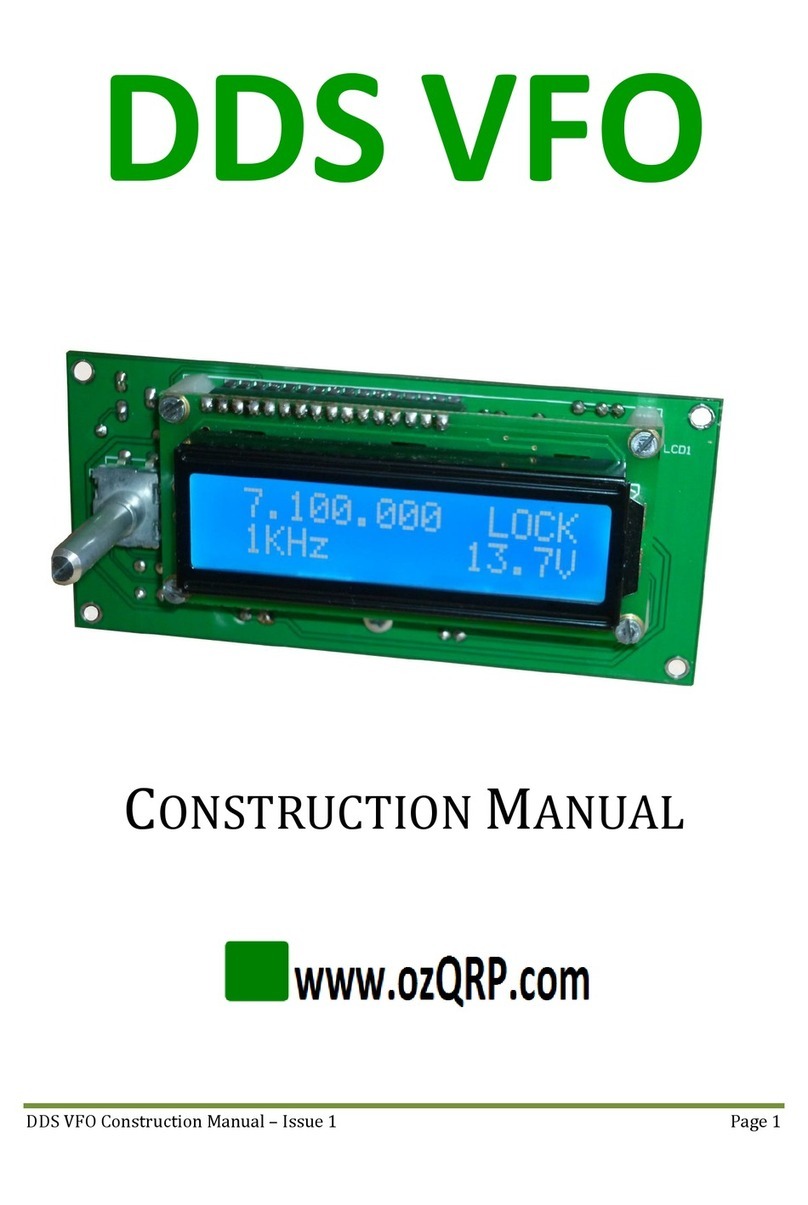
MST3 Construction and Operation Manual –Issue 1 Page 2
CONTENTS
1Introduction..............................................................................................................................................................5
2Block Diagram..........................................................................................................................................................7
3Circuit Description ................................................................................................................................................. 8
3.1 Carrier Oscillator ...............................................................................................................................................................8
3.2 SSB generator......................................................................................................................................................................8
3.3 Crystal Filter ........................................................................................................................................................................9
3.4 Transmit mixer ...................................................................................................................................................................9
3.5 Power amplifier..................................................................................................................................................................9
3.6 Power Supply and RX/TX switching ...................................................................................................................... 10
3.7 Receive mixer ................................................................................................................................................................... 10
3.8 Product Detector............................................................................................................................................................. 10
3.9 Audio Power Amplifier................................................................................................................................................. 11
3.10 Audio AGC .......................................................................................................................................................................... 11
3.11 Intelligent Tone Module .............................................................................................................................................. 12
3.11.1 Overview.................................................................................................................................................................. 12
3.11.2 Circuit operation .................................................................................................................................................. 12
4Kit Supplied Parts ................................................................................................................................................ 21
5Individual Parts List............................................................................................................................................ 23
6Off Board Parts...................................................................................................................................................... 26
7Main Board Construction.................................................................................................................................. 27
7.1 General ................................................................................................................................................................................ 27
7.2 Construction Steps ......................................................................................................................................................... 28
8Band Pass Filters.................................................................................................................................................. 38
8.1 Circuit description.......................................................................................................................................................... 38
8.2 Construction...................................................................................................................................................................... 39
9Low Pass Filter...................................................................................................................................................... 42
9.1 Circuit description.......................................................................................................................................................... 42
9.2 Construction...................................................................................................................................................................... 42
10 Adding a VFO ......................................................................................................................................................... 45
11 Enclosure................................................................................................................................................................. 46
11.1 Front Panel ........................................................................................................................................................................ 46
11.2 Rear Panel .......................................................................................................................................................................... 46
11.3 Mounting the PCB........................................................................................................................................................... 47
12 Wiring up................................................................................................................................................................. 48
12.1 general................................................................................................................................................................................. 48
12.2 Headers ............................................................................................................................................................................... 48






























